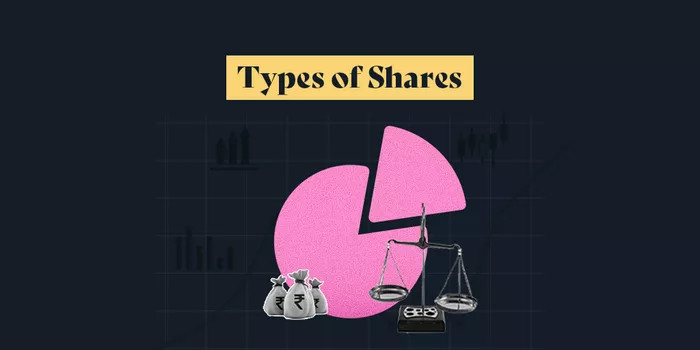Shares are the building blocks of ownership in a company. They represent an investor’s stake in the company’s assets and profits. However, not all shares are created equal. There are different types of shares, each with its own rights, privileges, and characteristics. Understanding these types of shares is essential for investors looking to navigate the complex landscape of the stock market.
Common Shares
Common shares, also known as ordinary shares, are the most prevalent type of shares issued by companies. When individuals think of investing in the stock market, they typically envision purchasing common shares. These shares represent ownership in the company and entitle shareholders to participate in its growth and success.
One of the key characteristics of common shares is their voting rights. Shareholders holding common shares have the right to vote on important company decisions, such as the election of the board of directors and major corporate policies. However, the extent of voting power may vary depending on the company’s structure and the number of shares owned by the shareholder.
Common shares also provide investors with the potential for capital appreciation. As the company grows and becomes more profitable, the value of its common shares may increase, allowing shareholders to sell their shares at a higher price than they initially paid. Additionally, common shareholders may receive dividends, although these payments are typically discretionary and depend on the company’s financial performance and management’s decision.
While common shares offer the potential for significant returns, they also carry a higher level of risk compared to other types of shares. In the event of liquidation or bankruptcy, common shareholders are the last to receive payment after creditors and preferred shareholders. As such, investing in common shares requires careful consideration of the company’s financial health and growth prospects.
Preferred Shares
Preferred shares, as the name suggests, come with certain preferences and advantages over common shares. These shares typically offer a fixed dividend payment, which is paid out to shareholders before any dividends are distributed to common shareholders. This fixed income stream makes preferred shares appealing to investors seeking steady cash flow and income.
Unlike common shares, preferred shares generally do not come with voting rights. Instead, preferred shareholders have priority over common shareholders in the event of liquidation or bankruptcy. In other words, if the company goes bankrupt, preferred shareholders are entitled to receive their share of assets before common shareholders receive anything.
Preferred shares also often come with a callable feature, allowing the issuing company to repurchase the shares at a predetermined price after a certain period. This gives companies flexibility in managing their capital structure and may result in early redemption for shareholders, depending on market conditions.
While preferred shares offer stability and fixed income, they may not offer the same potential for capital appreciation as common shares. Additionally, the lack of voting rights means preferred shareholders have limited influence over company decisions. Nevertheless, preferred shares can be a valuable addition to an investor’s portfolio, providing diversification and income stability.
Convertible Preferred Shares
Convertible preferred shares combine the features of both preferred shares and common shares, offering investors a unique investment opportunity. These shares come with a fixed dividend payment like traditional preferred shares but also give shareholders the option to convert their preferred shares into a predetermined number of common shares at a specified conversion ratio.
The ability to convert preferred shares into common shares provides investors with the potential for capital appreciation. If the value of the company’s common shares increases, convertible preferred shareholders may choose to convert their shares, allowing them to participate in the company’s growth and potential upside.
Convertible preferred shares often appeal to investors seeking a balance between fixed income and growth potential. These shares offer downside protection through their fixed dividend payments while also providing the opportunity to benefit from the company’s performance and growth prospects.
However, it’s essential to consider the conversion terms and conditions carefully before investing in convertible preferred shares. The conversion ratio, conversion price, and conversion period can significantly impact the potential returns and investment outcomes. Additionally, the issuing company’s financial health and growth prospects should be thoroughly evaluated to assess the viability of the conversion option.
Cumulative vs. Non-Cumulative Preferred Shares
Another distinction among preferred shares is whether they are cumulative or non-cumulative. Cumulative preferred shares guarantee that any missed dividend payments accumulate and must be paid to shareholders before common shareholders receive any dividends. In contrast, non-cumulative preferred shares do not accumulate missed dividend payments, meaning shareholders may forfeit unpaid dividends if the company fails to meet its payment obligations.
Cumulative preferred shares offer investors greater income security and protection, as any missed dividend payments must be made up before common shareholders receive dividends. This makes cumulative preferred shares particularly attractive to income-oriented investors seeking steady and reliable cash flow.
Non-cumulative preferred shares, on the other hand, may offer higher dividend yields to compensate for the lack of cumulative dividends. However, they also carry higher risk, as shareholders may not receive missed dividend payments if the company fails to meet its payment obligations. Investors considering non-cumulative preferred shares should carefully assess the issuing company’s financial strength and ability to generate consistent cash flow.
Conclusion
In summary, understanding the different types of shares is crucial for investors looking to build a diversified and resilient investment portfolio. Common shares offer ownership rights and potential for capital appreciation, while preferred shares provide stability and fixed income. Convertible preferred shares offer a unique combination of fixed income and growth potential, while the distinction between cumulative and non-cumulative preferred shares affects income security. By carefully evaluating the characteristics and risks associated with each type of share, investors can make informed decisions that align with their financial goals and risk tolerance.


